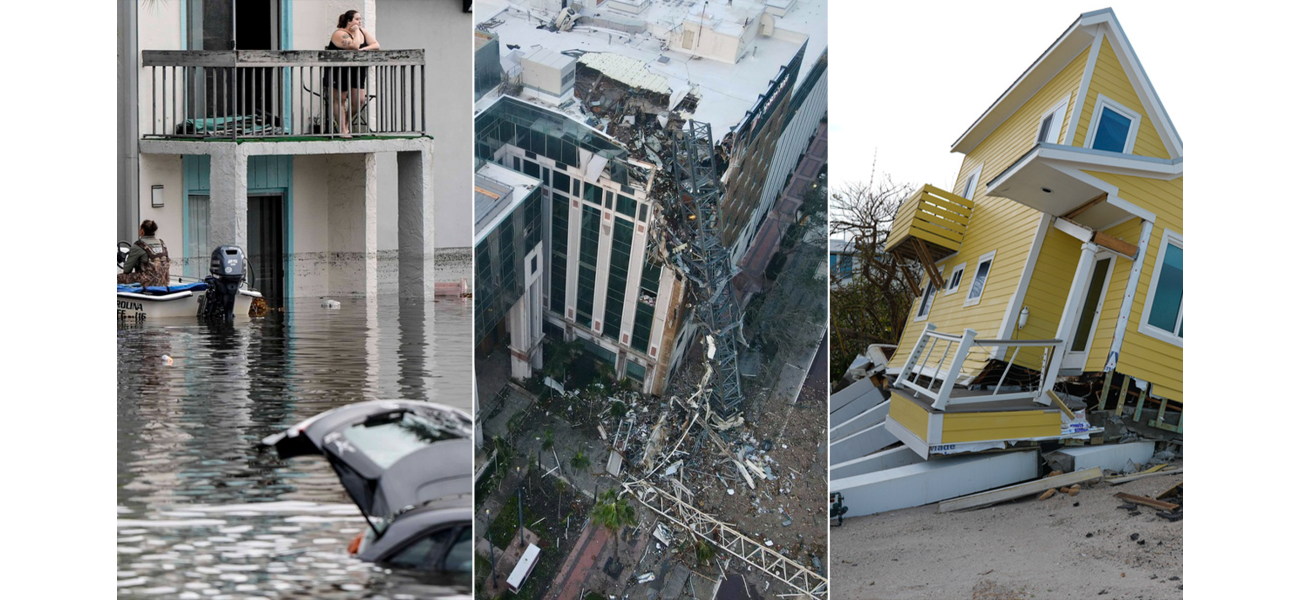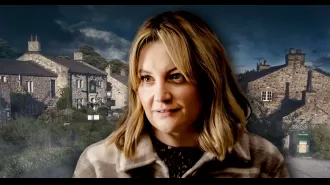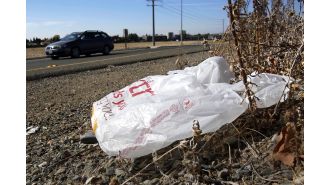Tornadoes leave 5 dead in Milton.
3 million lost power due to storm, worsening conditions caused by Helene, but Tampa avoided direct hit.
October 10th 2024.

Hurricane Milton has made its way through the Atlantic Ocean, leaving a trail of destruction in its wake. The powerful storm first hit Florida, causing widespread power outages and spawning numerous tornadoes. Sadly, the storm has claimed at least five lives and added to the already devastating aftermath of Hurricane Helene. However, one silver lining is that Tampa was spared a direct hit from Milton.
As the storm approached, it appeared to be heading towards Tampa, causing concern for a potential deadly storm surge. However, in a last-minute change of direction, Milton made landfall as a Category 3 storm in Siesta Key, about 110 kilometers south of Tampa. While the damage was extensive and water levels are expected to continue rising, Governor Ron DeSantis assured the public that it was not the worst-case scenario.
Fortunately, the feared storm surge for Tampa did not occur, although the storm did bring heavy rain with up to 45 centimeters falling in some areas. The worst storm surge was reported in Sarasota County, where it reached 2.5 to 3 meters, still lower than the surge seen during Helene. Governor DeSantis stated that the extent of the damage will become clearer as the day goes on and assured the public that they will get through this together.
As the sun rose on Thursday, storm-surge warnings were still in place for the east-central coast of Florida and into Georgia. Tropical storm warnings were also issued along the coast up to South Carolina. Officials in the hardest-hit counties of Hillsborough, Pinellas, Sarasota, and Lee urged residents to stay home, warning of dangerous conditions such as downed power lines, blocked roads, and flooding.
Sheriff Chad Chronister of Hillsborough County, where Tampa is located, emphasized the importance of staying safe and informed by saying, "We'll let you know when it's safe to come out." The city manager of Plant City, Bill McDaniel, described the flooding in his area as "staggering" and reported that 35 people had to be rescued overnight. He estimates that the city received 34 centimeters of rain, causing unprecedented levels of flooding.
Meanwhile, on the small barrier island of Matlacha, the damage was even more severe. A tornado and storm surge hit the island, damaging many of the colorful buildings in the fishing and tourist village. Tom Reynolds, a 90-year-old resident, spent the morning cleaning up his home, which was filled with four feet of mud and water. He also found debris from a tornado that had picked up a car and thrown it across the road. Despite the destruction, Reynolds plans to repair his home, saying, "What else am I going to do?"
On Anna Maria Island, city workers were grateful to not be wading through floodwaters as they cleaned up debris from Helene. The piles of sand that the previous storm had brought in may have helped protect homes from further damage, according to Jeremi Roberts of the State Emergency Response Team. As city worker Kati Sands cleared the streets of debris, she remarked, "I'm shocked it's not more. We lost so much with Helene, there wasn't much left."
Hurricane Milton has made its mark on the Atlantic Ocean, causing major destruction in its path as it barreled through Florida. The powerful storm left a trail of chaos behind, knocking out power to over 3 million customers and unleashing a barrage of tornadoes.
The storm, which has already claimed the lives of at least five people, was further compounded by the aftermath of Helene, another destructive hurricane. Fortunately, the city of Tampa was spared a direct hit, but the system continued to track southward and made landfall as a Category 3 storm in Siesta Key, approximately 110 kilometers south of Tampa.
Despite the widespread damage and potential for rising water levels in the coming days, Governor Ron DeSantis stated that the situation was not as dire as it could have been. The feared storm surge for Tampa did not come to fruition, although the storm did bring heavy rainfall of up to 45 centimeters in some areas.
While the worst storm surge seemed to occur in Sarasota County, reaching heights of 2.5 to 3 meters, it was still lower than the worst place hit during Helene. Governor DeSantis acknowledged that the extent of the damage would become clearer as the day went on, but reassured the public that they would get through this difficult time.
As the sun rose on Thursday, storm-surge warnings were still in effect for the east-central Florida coast and into Georgia. Tropical storm warnings were also issued for areas along the coast into South Carolina. In the hard-hit counties of Hillsborough, Pinellas, Sarasota, and Lee, officials urged residents to stay home due to the dangerous conditions, including downed power lines, blocked roads, and flooding.
Sheriff Chad Chronister of Hillsborough County, which includes Tampa, took to Facebook to warn residents to stay inside until it was safe to venture out. In Plant City, just inland from Tampa, the flooding was described as "absolutely staggering" by City Manager Bill McDaniel. Emergency crews worked tirelessly to rescue 35 people overnight, with the city receiving 34 centimeters of rain.
McDaniel, a lifelong resident of the community, expressed shock at the level of flooding, stating that he had never seen anything like it before. On the tiny barrier island of Matlacha, located off Fort Myers, the storm brought both a tornado and a surge, causing significant damage to the colorful buildings in the fishing and tourist village.
90-year-old Tom Reynolds spent the morning cleaning up after the storm, sweeping out four feet of mud and water and collecting pieces of aluminum siding that had been torn off by the tornado. He recounted how the twister had picked up a car and tossed it across the road, while other structures had caught fire.
Meanwhile, on Anna Maria Island, city workers were grateful that they were not wading through floodwaters as they cleaned up debris left behind by Helene just two weeks prior. According to Jeremi Roberts of the State Emergency Response Team, the piles of sand pushed up by Helene may have acted as a barrier and protected homes from further damage.
City worker Kati Sands expressed her surprise at the relatively minimal damage considering the island's previous encounter with Helene. She and her colleagues worked to clear the streets of debris such as siding and broken lights, grateful for the small blessing amidst the devastation. As for Tom Reynolds, he plans to rebuild the home he has lived in for over 30 years, stating, "What else am I going to do?"
As the storm approached, it appeared to be heading towards Tampa, causing concern for a potential deadly storm surge. However, in a last-minute change of direction, Milton made landfall as a Category 3 storm in Siesta Key, about 110 kilometers south of Tampa. While the damage was extensive and water levels are expected to continue rising, Governor Ron DeSantis assured the public that it was not the worst-case scenario.
Fortunately, the feared storm surge for Tampa did not occur, although the storm did bring heavy rain with up to 45 centimeters falling in some areas. The worst storm surge was reported in Sarasota County, where it reached 2.5 to 3 meters, still lower than the surge seen during Helene. Governor DeSantis stated that the extent of the damage will become clearer as the day goes on and assured the public that they will get through this together.
As the sun rose on Thursday, storm-surge warnings were still in place for the east-central coast of Florida and into Georgia. Tropical storm warnings were also issued along the coast up to South Carolina. Officials in the hardest-hit counties of Hillsborough, Pinellas, Sarasota, and Lee urged residents to stay home, warning of dangerous conditions such as downed power lines, blocked roads, and flooding.
Sheriff Chad Chronister of Hillsborough County, where Tampa is located, emphasized the importance of staying safe and informed by saying, "We'll let you know when it's safe to come out." The city manager of Plant City, Bill McDaniel, described the flooding in his area as "staggering" and reported that 35 people had to be rescued overnight. He estimates that the city received 34 centimeters of rain, causing unprecedented levels of flooding.
Meanwhile, on the small barrier island of Matlacha, the damage was even more severe. A tornado and storm surge hit the island, damaging many of the colorful buildings in the fishing and tourist village. Tom Reynolds, a 90-year-old resident, spent the morning cleaning up his home, which was filled with four feet of mud and water. He also found debris from a tornado that had picked up a car and thrown it across the road. Despite the destruction, Reynolds plans to repair his home, saying, "What else am I going to do?"
On Anna Maria Island, city workers were grateful to not be wading through floodwaters as they cleaned up debris from Helene. The piles of sand that the previous storm had brought in may have helped protect homes from further damage, according to Jeremi Roberts of the State Emergency Response Team. As city worker Kati Sands cleared the streets of debris, she remarked, "I'm shocked it's not more. We lost so much with Helene, there wasn't much left."
Hurricane Milton has made its mark on the Atlantic Ocean, causing major destruction in its path as it barreled through Florida. The powerful storm left a trail of chaos behind, knocking out power to over 3 million customers and unleashing a barrage of tornadoes.
The storm, which has already claimed the lives of at least five people, was further compounded by the aftermath of Helene, another destructive hurricane. Fortunately, the city of Tampa was spared a direct hit, but the system continued to track southward and made landfall as a Category 3 storm in Siesta Key, approximately 110 kilometers south of Tampa.
Despite the widespread damage and potential for rising water levels in the coming days, Governor Ron DeSantis stated that the situation was not as dire as it could have been. The feared storm surge for Tampa did not come to fruition, although the storm did bring heavy rainfall of up to 45 centimeters in some areas.
While the worst storm surge seemed to occur in Sarasota County, reaching heights of 2.5 to 3 meters, it was still lower than the worst place hit during Helene. Governor DeSantis acknowledged that the extent of the damage would become clearer as the day went on, but reassured the public that they would get through this difficult time.
As the sun rose on Thursday, storm-surge warnings were still in effect for the east-central Florida coast and into Georgia. Tropical storm warnings were also issued for areas along the coast into South Carolina. In the hard-hit counties of Hillsborough, Pinellas, Sarasota, and Lee, officials urged residents to stay home due to the dangerous conditions, including downed power lines, blocked roads, and flooding.
Sheriff Chad Chronister of Hillsborough County, which includes Tampa, took to Facebook to warn residents to stay inside until it was safe to venture out. In Plant City, just inland from Tampa, the flooding was described as "absolutely staggering" by City Manager Bill McDaniel. Emergency crews worked tirelessly to rescue 35 people overnight, with the city receiving 34 centimeters of rain.
McDaniel, a lifelong resident of the community, expressed shock at the level of flooding, stating that he had never seen anything like it before. On the tiny barrier island of Matlacha, located off Fort Myers, the storm brought both a tornado and a surge, causing significant damage to the colorful buildings in the fishing and tourist village.
90-year-old Tom Reynolds spent the morning cleaning up after the storm, sweeping out four feet of mud and water and collecting pieces of aluminum siding that had been torn off by the tornado. He recounted how the twister had picked up a car and tossed it across the road, while other structures had caught fire.
Meanwhile, on Anna Maria Island, city workers were grateful that they were not wading through floodwaters as they cleaned up debris left behind by Helene just two weeks prior. According to Jeremi Roberts of the State Emergency Response Team, the piles of sand pushed up by Helene may have acted as a barrier and protected homes from further damage.
City worker Kati Sands expressed her surprise at the relatively minimal damage considering the island's previous encounter with Helene. She and her colleagues worked to clear the streets of debris such as siding and broken lights, grateful for the small blessing amidst the devastation. As for Tom Reynolds, he plans to rebuild the home he has lived in for over 30 years, stating, "What else am I going to do?"
[This article has been trending online recently and has been generated with AI. Your feed is customized.]
[Generative AI is experimental.]
0
0
Submit Comment





